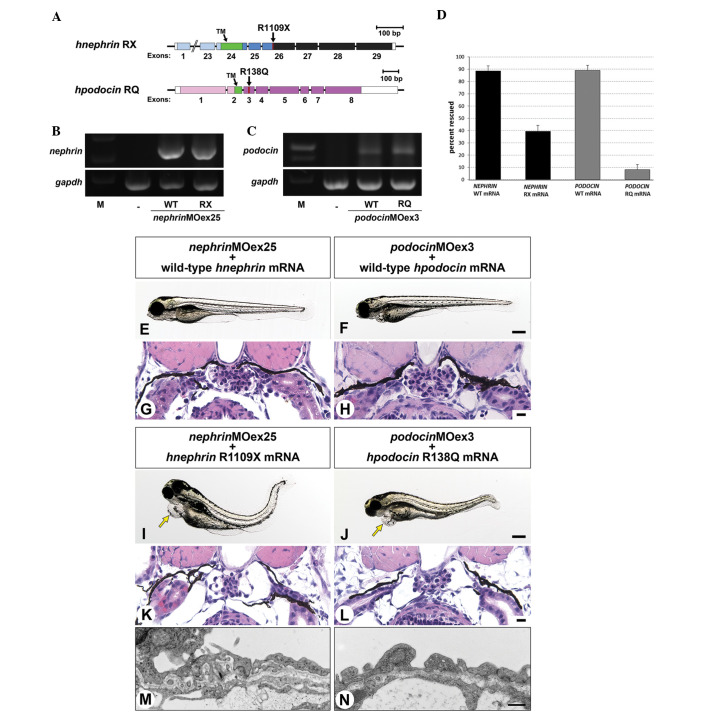Figure 4.
Human mRNA injection. (A) The mutation sites introduced in the human Nephrin and Podocin mRNAs. (B and C) Three types of injected human mRNA (wild-type, NEPHRIN-R1109X and PODOCIN-R138Q) are detected in 2 dpf larvae by RT-PCR. (D) Wild-type mRNAs of human Nephrin and Podocin may rescue ~89% of nephrinMOex25 and podocinMOex3 morphants, respectively, however, the percentage of rescued larvae is significantly reduced when mutated mRNA is co-injected at 39 and 8.1%, respectively. The phenotype was scored by pericardial edema, body-axis curvature, glomerulus morphology and altered glomerular barrier. (E–H) Wild-type human Nephrin and Podocin mRNA rescue the morphant phenotypes. (E and F) The larvae exhibit a straight body-axis with no or slight pericardial edema, (G and H) and a well-developed glomerulus. (I–N) Mutated human NEPHRIN-R1109X and PODOCIN-R138Q mRNA do not rescue the morphant phenotypes as frequently. (I and J) Larvae injected with mutated mRNA exhibit pericardial edema and body-axis curvature, (K and L) hypoplastic glomerulus (M and N) and no regular foot processes. Bar scales, 250 μm in (F), (J); 10 μm in (H), (L) and 100 nm in (N). dpf, days post-fertilization.

